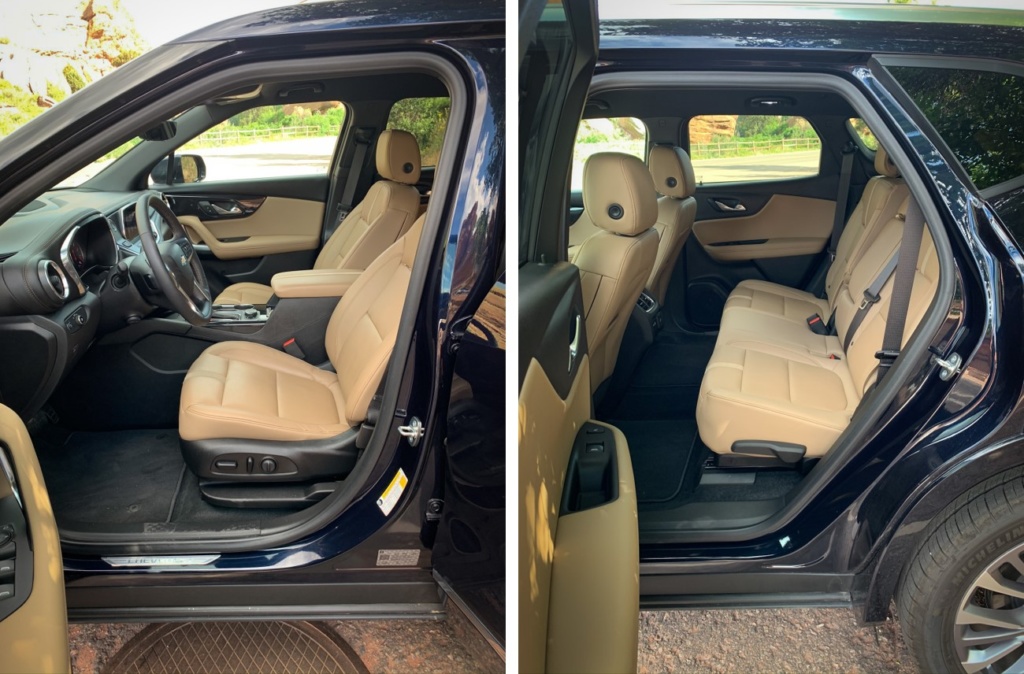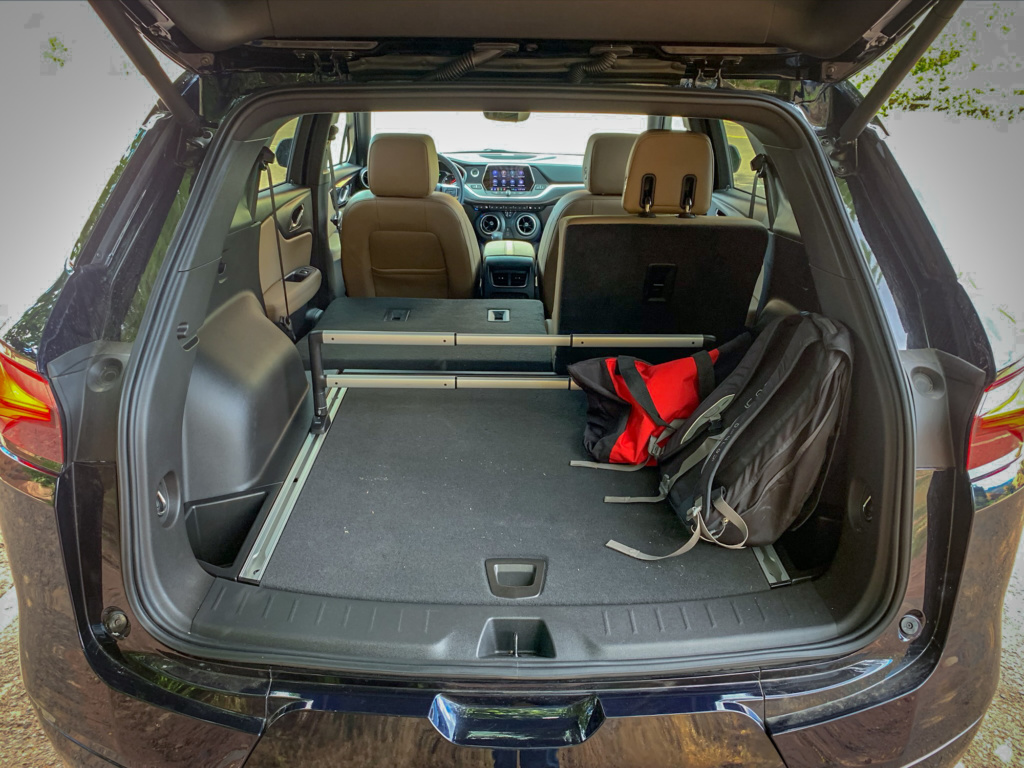
Automakers usually look to the model’s past to adopt what worked and what needed rethinking, however, in the case of the Blazer, Chevrolet chose a different path and there are no similarities with the rough and tumble SUV that once roamed for 25 years. Considering the frenzy that Ford has generated with its retro-inspired Bronco, one can’t help but wonder if this soft-natured crossover should have been called something else. But even after putting the nameplate aside, the new crossover’s concept feels disjointed and as such, it becomes difficult to appreciate more than just the sum of its components.
Styling Facade
In an interesting turn of events, the Blazer’s design draws inspiration from the Camaro and Corvette. Its sporty language is evident with slim LED signature lighting, blacked-out A-pillars, and crisp styling lines, however, this front-wheel-drive chassis lacks the natural sporting proportions.

The front axle is positioned too close to the cabin, the front overhang is long and looks too heavy, while the rear overhang is short. Those designs, plus the forward tilt from the suspension, contribute to a visually unbalanced stance which is certainly not very Camero-like.

Inside, the Blazer continues to be inspired by the Camaro with a slim row of buttons, very large center HVAC vents, and a relatively high window line, yet the seats don’t support any level of enthusiastic driving and the engine sounds are nothing to write home about.
In an era where brands strive to be seen as authentic and exciting, the Blazer styling team puts up a sporty image that isn’t backed up in any other area.
Right-Sized
The Blazer fills the size gap in Chevrolet’s compact crossover line-up, sitting between the Equinox and the Traverse which has three rows. It comfortably fits five adults and the cargo area can easily be expanded by folding the second-row seats.


A big step-up in interior design
Compared to its brand siblings, the Blazer’s stands out for its excellent panel fitment, premium materials, and high-quality details.

For example, the steering wheel’s controls are precise-feeling buttons and wheels instead of a pseudo-water-proof game controller rubber pad, and the softly padded dash uses real thread stitching while sewn-in multi-color tags give the dash and seats a custom look and are another testament to the Camaro-inspired theme. Long pieces of interior trim and buttons that finally make do without a surrounding piece of plastic eliminate unsightly gaps.

Even the doors deserve mention with their uncluttered designs and soft-touch materials. Finally, Chevrolet has a cross-over with an interior worth talking about!
Power without refinement and Ride without handling
The 3.6-liter V6 and the nine-speed automatic allow the Blazer to accelerate with authority. The transmission’s gearing is tightly spaced and the engine has plenty of power across the rev-range.
However, in another odd twist of fate for the Blazer brand, I would think twice before utilizing the Blazer’s modest 4,500 lbs towing rating. During a run up the mountain highways, the water temperature rose to the upper quarter of the gauge range. Though it never led to any performance issues, I found it a little concerning, considering the cooler ambient temperatures and lack of any passengers or payload.
Another abnormality that made me question its reliability was a buzzing noise that occasionally triggered around 3,000 rpm and was loud to hear echoing off of the car the next lane over.

The front-drive-biased automatic AWD system worked seamlessly and was quick to pre-emptively distribute power and prevent any front-tire slip. Off-roading is strongly discouraged due to low ground clearance and poor clearance angles. It includes a 2WD mode that further disconnects rotating parts for improved efficiency, however, it remained in Auto AWD mode for the majority of the time in my hands.

The Blazer’s sporting design is unsupported by the dynamic nature of the chassis. Feeling tuned for a smooth highway ride, the soft dampers and vague steering do little to encourage a blast down a canyon highway.

Overall fuel economy is average for the class with an EPA estimated 21 mpg. After a week of commuting, the Blazer returned mid-23 mpg which felt appropriate for this sort of power and size.
Loaded with Features
The Blazer is unquestionably a modern crossover. A standard 8-inch touch-screen display, an excellent surround-view camera system, a 4G Wi-Fi hub, a pleasant-sounding Bose stereo, and ventilated seats help to ease the daily struggles of tight parking lots and long commutes.

The full suite of active safety technology was on-board such as automatic emergency braking with pedestrian detection, blind-spot monitoring, adaptive cruise control, lane keep assist, a rear-view mirror camera, and On-Star, however, it requires the Driver Confidence II package which is pricey at $2,165. The out the door price for this Premier example approached $49,000.
Conclusion
The Blazer’s right-size and sporty looks will make it a sales success for Chevrolet, but one can’t help but think of the opportunity lost by tying this sporty-looking, soft-riding crossover to the Blazer nameplate.

